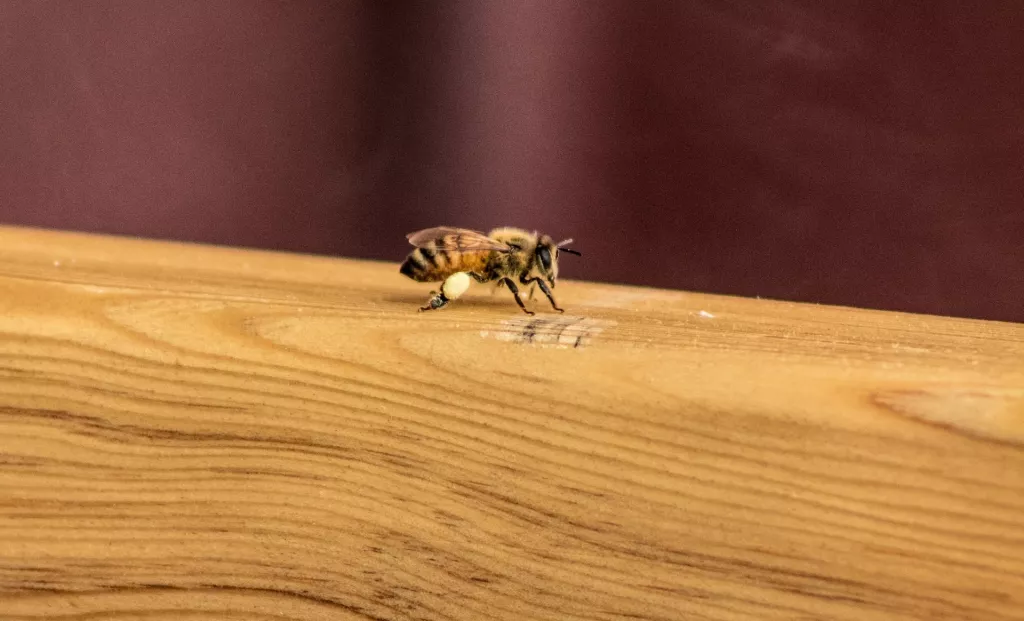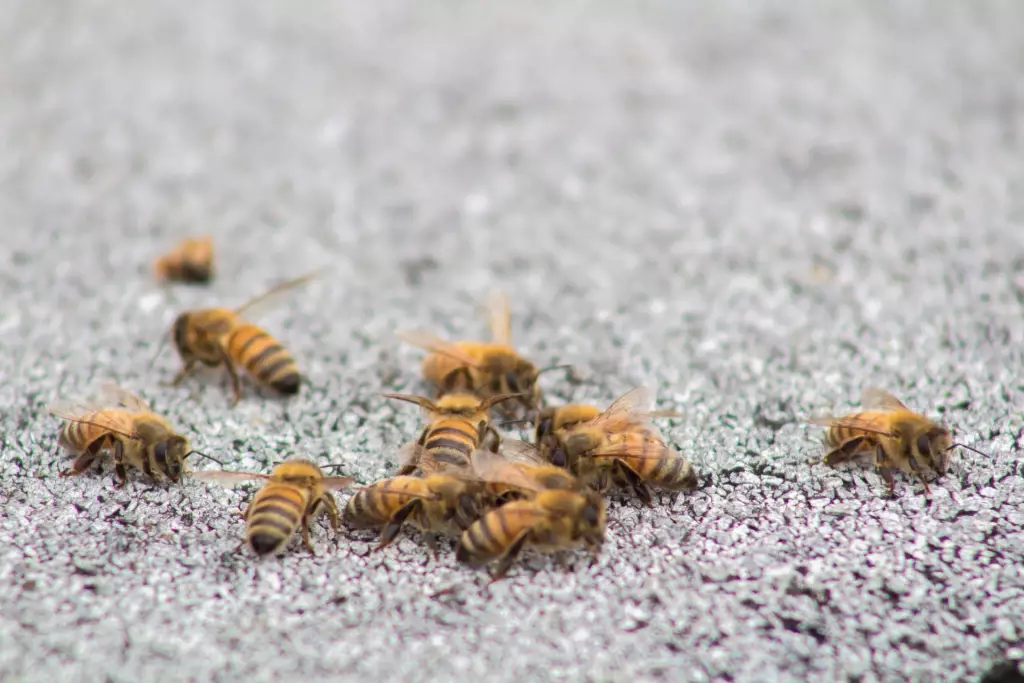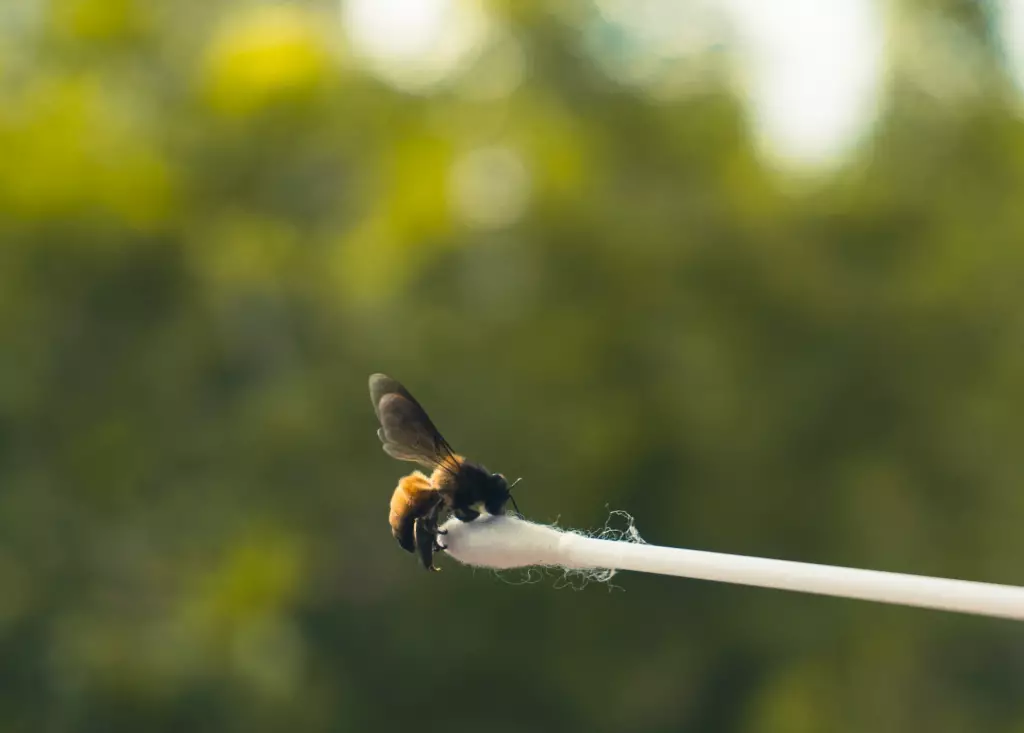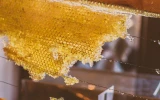How Long Can a Bee Live Without Food or Water?
Do bees go on diets? With the busy lives they lead, probably not. But if you've ever wanted to know how long they can go without food and water, it's time for you to find out here.
Bees can sustain flight for an hour before they become grounded and exhausted. If they are indoors, they might last for a day. Their chances of survival are drastically lower in cold weather.
These small creatures are capable of doing so much work. Naturally, we may sometimes wonder how they sustain such busy lives. I'll take you through how bees get their food and water, and how you can conduct supplemental feeding yourself in case of emergencies.
Summary
- Bees can fly for a little under an hour outdoors before they lose the energy to sustain flight and become grounded. In cold weather, this time frame is much smaller.
- If trapped indoors with absolutely no sources of food, bees can survive for one day. However, they can default to feeding on high-sugar sources of food they may find around the house instead.
- Pollen patties and sugar water are methods of supplemental feeding that may help you save your bees in nectar dearths and amidst long winters.

On this page:
How Long Can Bees Live Without Food?
Assuming the honeybee has a stomach full of honey, they can fly for a little under an hour outdoors before they lose the energy to sustain flight and become grounded. In cold weather, this time frame is much smaller.
If a bee has suddenly become trapped indoors, the worker can survive for about one day without any sources of nectar and pollen.
This is possible because bees have two stomachs: the one they use to sustain themselves and a honey stomach. The first stomach is responsible for digesting their food and water, and converting it into energy. The honey stomach is just a temporary storage facility for honey that the bees can fill up before they return to the hive.
A valve connects the original stomach to the honey stomach, so in emergency scenarios where forager bees start getting hungry mid-flight, they can digest the nectar in the honey stomach to increase flying time and locate alternate sources of food in the area.

Do honeybees eat human food?
Yes. Sometimes, honeybees cannot find a source of nectar or they just feel like going for an easy food source at the moment. This prompts them to start looking for foods rich in sugar. They enjoy sipping soft drinks and munching on fresh fruits. If you've ever been on a picnic, you may have been approached by a few opportunistic honeybees looking to take some of your goods home.
Do honeybees get a sugar rush?
We all know not to give children any sweets or chocolates before bed. But does this rule apply to bees as well? Do they also get hopped up on all the sugar they're collecting? A study has confirmed that for bees, the initial intense sweetness sugar can last for up to ten seconds. This compels the bee to continue collecting from that source of nectar until the stimulation declines. At that point, they start seeking out a different source.
Honeybees can also get caffeinated. A separate study showed that caffeine helps bees remember where flowers are located, and also helps them quickly find the flowers that are important sources of nectar and pollen.
How Long Can Bees Survive Without Water?
Honeybees will only survive for a few hours without sugar-rich sources of hydration before they become weak and die.
Water is just as important to bees as it is to us. Honeybees use water to regulate the hive's temperature and quench their nestmate's thirst. Bees also need water to dilute their food for easier feeding, and to regulate the humidity of their hives. While nectar does have some water content, it is not enough to sustain the bees. Conversely, honey has been stripped of its water content and is not capable of hydrating bees.
Despite their need for water, falling into bodies of water can be dangerous for these tiny insects. They only have a short time frame to get back on land and dry themselves off before they drown.
Are bees picky about their source of water?
No—and interestingly, bees actually prefer drinking "dirty" water. They seem to enjoy murky water with plenty of algae. So if you have the capabilities, you can set up a small bee pond and just clean out decaying organic matter from the bottom so that the water remains oxygenated.
Alternatively, you could try just about any other source of water. Bees will go anywhere they can get hydration, but to ensure their safety, consider getting a trickling fountain, a bird bath with rocks, or even a simple bucket with sponges.
What happens if a bee falls into a body of water?
As long as the bee is not completely submerged, it has a fairly good chance of survival. A bee can flap its wings at incredibly high speeds. If one accidentally falls into deep pool of water, the water will stick to their wings. As a result, it becomes impossible to fly.
Instead, the honeybee will start flapping its ways differently to create ripples. These ripples will be enough to propel the bee gently across the water until, hopefully, they reach a dry surface. This process is called hydrofoiling and can be sustained for ten minutes.
Unfortunately, if the bee cannot make it back to dry land before their ten minutes is up, they will drown.
While bees cannot breathe underwater, they can remain submerged for five minutes or so. They don't breathe through noses or mouths like human beings; instead, honeybees are equipped with air holes all over their body, known as spiracles, that connect to air sacs inside.
These spiracles are equipped with muscles shaped like valves, which they can open and close as needed. As a result, they can close their spiracles underwater and use the oxygen in their air sacs for an extended period of time after they are deprived of air.
If you see a bee fully submerged in water, gently scoop it up and place it down on a flat surface. Observe for signs of life and conduct supplemental feeding as needed.

How to Feed Bees Yourself (Supplemental Feeding)
When you start beekeeping, you may find yourself in situations where your direct intervention is the only thing standing between a honeybee and impending doom. You might come across a tired bee crawling on the ground, too worn out to make the rest of its trip home. Or you've just finished taking a quick peek at your hives halfway into the winter and discovered, to your dismay, that they are quickly running out of supplies.
Beekeepers can implement supplemental feeding measures by making pollen patties and sugar water for their bees. The pollen patties are a common practice during long winters. It will help keep the bees alive so that they can stimulate brood rearing.
In addition, honeybees can also suffer from a shortage of nectar or pollen in other seasons, especially when they don't have a lot of local flora to visit. This is called a dearth. Beekeepers need to step in and act quickly to keep the colony focused on brood rearing and maintaining their numbers.
How to make pollen patties
If you cannot use real pollen from the colony, brewer's yeast or commercially available yeast is a popular substitute. Mix the yeast dry with the same amount of sugar, and add 50 percent sugar syrup to the dry ingredients so that you end up forming a paste.
To prevent the patties from dehydrating (honeybees will not eat hard, dry patties!), they are sectioned into two-pound quantities and placed in wax paper. These treats are easily digestible, delicious for the bees, and capable of offering a good balance of nutrients.
If you plan on exploring other pollen substitutes, be mindful of the ingredients. Some additives, like stachyose, are harmful to bees.
How to make sugar water
Usually, bees get their energy from honey. It is meant to be a constant source of carbohydrates. This is especially important throughout the winter, when they need to focus all their efforts into staying warm.
If your bees have run out of honey before the spring blooms have appeared, here's a quick recipe to making sugar water.
Fill a large pot with one part distilled water to two parts can or beet sugar. Start boiling your mixture and stir constantly to make sure that all the sugar is completely dissolved in the water.
For every gallon of sugar water you've mixed, add one and a half tablespoons of apple cider vinegar. This will help keep your concoction from freezing.

